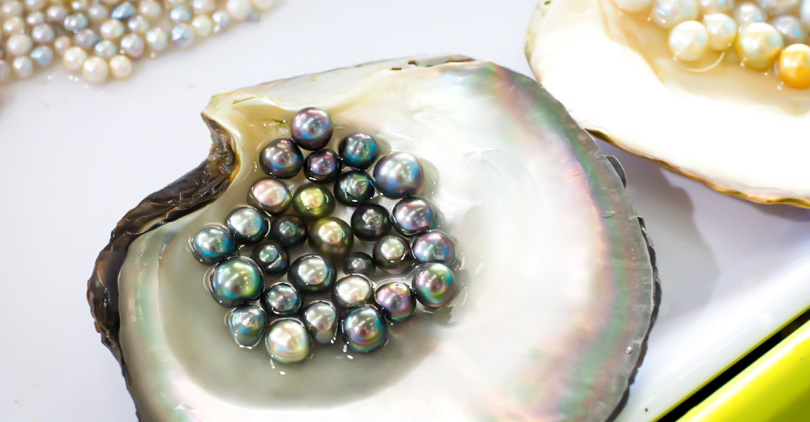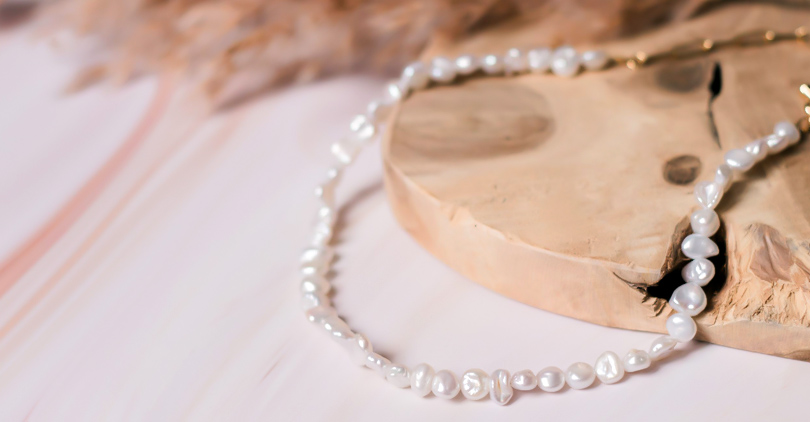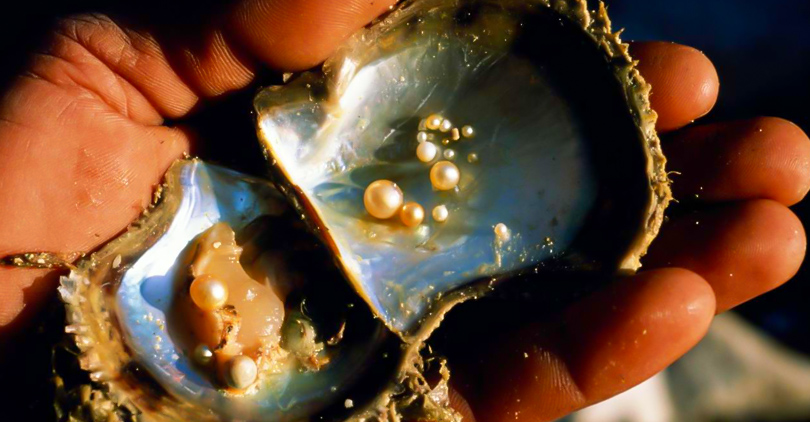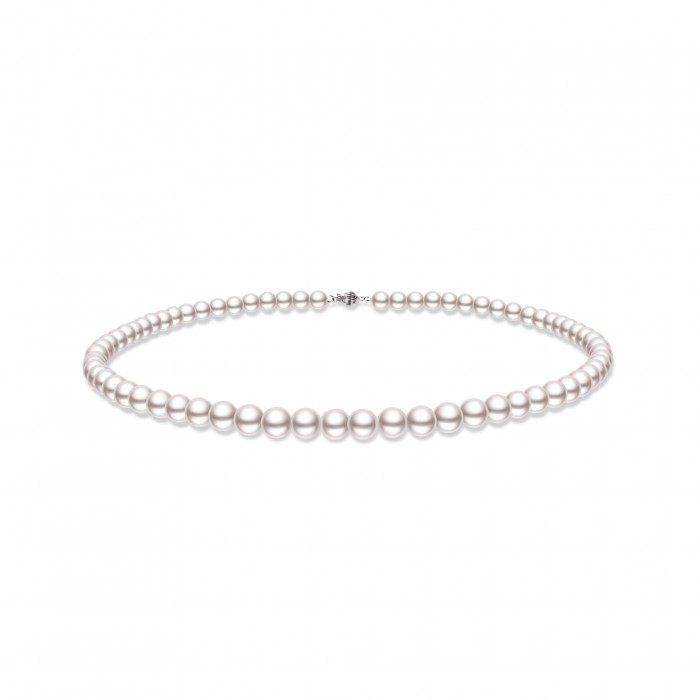What Is The Difference Between Cultured, Freshwater and Shell Pearls?


Have you ever thought that there is only one kind of pearl? If you have, then don't worry – a lot of other people have had the same idea. When it comes to pearls, most individuals don't know that there are many different types, like freshwater pearls, cultured pearls, and shell pearls, which are accessible in the market.
As somebody who spends significant time with jewelry, I find that numerous individuals are unconscious of exactly how unique each type can be — not just in appearance and where they come from but also by the way they're made. It's truly outstanding!
Throughout this blog entry, we will investigate what makes cultured pearls, freshwater pearls, and shell pearls extraordinary— from how they're shaped to their novel characteristics, qualities, shading, shape, surface—and more.
Cultured Pearls vs. Natural Pearls

If we talk about pearls, we can divide them into two main types: cultured pearls and natural pearls. Although mollusks make both, they differ in the way they are formed. Let's look into it more carefully:
Differences Between Cultured Pearls and Natural Pearls

Although cultured pearls and natural pearls may appear similar, their differences lie deep in the stories of how they came to be. Natural pearls are rare and form when an irritant accidentally lodges inside a mollusk's shell. Over time, nacre secretes around the foreign object.
In contrast, cultured pearls require human intervention. Farmers put a nucleus—often made from mussel shells or mother-of-pearl reclaimed from another pearl—in a mollusk. It then secretes layers of nacre around this intruder. By doing this on purpose, producers can make many more pearls than would occur naturally.
Natural pearls are captivating because each is unique (due to factors beyond anyone's control: what size an organism that produced it happened to be and where it was living when irritation occurred). Cultured ones have more consistent quality—it matters less if you want a round shape or precise size.
The Main Types of Cultured Pearls

When it comes to cultured pearls, three types dominate the market: Akoya pearls, Tahitian pearls, and South Sea pearls.
•Akoya pearls come mostly from Japan and China. They're round and usually white or cream-colored—classic pearl qualities.

•Tahitian pearls grow in French Polynesia. Their natural colors include black, gray, green, and blue—you can find some truly beautiful combinations.

•South Sea pearls are farmed in Australia, Indonesia, and the Philippines. They're among the largest cultured pearls you'll see—some measure up to 20mm! Natural golden yellow hue or creamy white color makes them uniquely appealing.

Pearl fans everywhere appreciate these differences; each type has its special appeal!
How to Distinguish Between Natural Pearls and Cultured Pearls?

Identifying whether a pearl is natural or cultured can be challenging because they often look the same. However, there are some clues to help you work it out.
•One clue is how rare they are – natural pearls are very hard to find, and so cost much more than cultured ones, which are easier to come by.
•Another is what their surface looks like – natural pearls have a rough, bumpy texture caused by growing without anyone's help. Cultured pearls grow in cultivated conditions, so theirs is smoother and often rounder, too.
•Lastly, if you X-ray a pearl, you can see its core: no nucleus means it's natural; one means it isn't.
Freshwater Pearls vs. Saltwater Pearls

When it comes to pearls, the kind that grows in freshwater shells is different from those that grow in saltwater oysters. The first ones come out of mollusks living in rivers or lakes, while the others form inside oysters found at sea. Let's explore their differences in detail:
Differences Between Freshwater Pearls and Saltwater Pearls

Although both freshwater pearls and saltwater pearls share an irresistible allure, there are several ways in which these gems differ.
•For starters, freshwater pearls grow inside mollusks that live in rivers or lakes. Saltwater pearls form within oysters in oceans or seas. This distinction affects size: typically, freshwater pearls are smaller than their counterparts from the sea.
•Another difference is color. Freshwater pearls come in many natural shades – white, pink, lavender, and even metallic-looking ones. In contrast, commonly found hues for saltwater varieties are classic, like cream-colored creamsicle bars.
•A third contrast involves luster. Saltwaters' mirror-like luster is famous, whereas freshwaters have softer sheens but often show interesting textures or shapes, too.
The Main Types of Saltwater Pearls

When it comes to saltwater pearls, three types stand out: Akoya pearls, Tahitian pearls, and South Sea pearls. They are all amazing in their way.
•Akoyas are the most classic-looking of all three types. Most of them come from Japan and are a perfect round white — they're what many people think of when they hear the word "pearl."
•Tahitians are famous for their range of colors, which can be anything from black to gray to peacock green. They come from French Polynesia, a group of islands near Australia.
•South Seas have a look that's pure luxury: big and satiny white or gold. Australia, Indonesia, and the Philippines supply most of these giant beauties.
How to Distinguish Between Freshwater Pearls and Saltwater Pearls?

When it comes to telling freshwater pearls apart from saltwater pearls, it can be hard – unless you've got a practiced eye. Here are some features that may help.
•A general rule of thumb is that freshwater pearls are smaller than their saltwater counterparts, which tend to have a more uniform size range and larger measurements overall.
•Next up: surface quality and shape. Freshwater pearls often have irregular shapes and may show imperfections on their surfaces. Saltwater ones are usually rounder and smoother.
•Lastly, luster – the shiny glow that makes pearls so magical! Saltwater ones might have a deep mirror-like luster, while those from freshwater sources could look softer and more satiny by comparison.
Shell Pearls

In addition to natural pearls and cultured pearls, there is another kind of pearl that has become popular in the world of jewelry: shell pearls. Here's what you need to know about them!
What are Shell Pearls? How are Shell Pearls Made?

Man-made pearls called shell pearls are sometimes also called simulated pearls or fake pearls. These kinds of pearls are not from nature but are made by people.
To create shell pearls, the insides of oyster shells are ground up into a powder. This powder is then mixed with binding materials and colorings before being formed into beads.
The manufactured beads are coated multiple times with a substance that looks like real pearl nacre to give them a shine similar to natural pearls. By doing all this, producers can make shell pearls look almost like the real thing.
Shell pearls let people on a budget get the effect of natural or cultured pearls without paying as much. Jewelry makers can choose from many colors, sizes, and shapes when working with these imitation pearls — which means the pieces they create have lots of room for creativity!
People might not be able to tell that a necklace or set of earrings isn't made with real pearls but are shell pearls instead. Or maybe even rings and bracelets with these imitation gems will fool others!
Benefits of Shell Pearls

Imitation pearls produced using shells, otherwise called shell pearls or fake pearls, have become famous as of late because they are not expensive and can be utilized from multiple points of view. Despite the fact that they're not genuine, they're still great value for money.
For instance, shell pearls last longer than ones found in nature or those grown inside mollusks. This means they don't get scratched or dulled as easily from being rubbed against something or coming into contact with chemicals, etc.
They come in various sizes and colors, too. This means designers can have more fun with the pieces of jewelry they make using them.
Shell pearls are lighter as well. As a result, earrings feel more comfortable on earlobes. Necklaces, too, don't feel as heavy around wearers' necks if made using these types instead of another kind.
People who would like to appear stylish but not spend too much money can also wear them and feel just as good about themselves afterward.
Comparison of Pearl Jewelry

Immerse yourself in the magical realm of pearl jewelry, where each item has a tale to tell about being pretty and stylish.
•Natural pearls are very uncommon and are obtained from beneath the sea. They are a kind of wealth that can't be calculated as they are created by nature itself. When you own one, it shows pure elegance because it cannot be made by man entirely. It's like owning a piece of history since nobody knows how many people have worn it or what oceans it has been in.

•Cultured pearls, unlike natural ones, are created when a person helps an oyster start the process of forming one. Although these pearls are more common, this doesn't make them any less wonderful. Imagine wearing White Freshwater Pearl Honey Dangle Earrings (7.5-8mm) that were carefully chosen for you by White Victoria.

•There is a wide choice of Freshwater pearls that can be obtained from rivers and lakes. They come in many different colors and shapes, so there is always something for everyone. These pearls are quite delicate, but their soft shades make them look great on any wrist – it is almost like having a bunch of flowers that never fade away.

•Saltwater pearls have a refined beauty that is perfect in its way. You could wear an 18K Gold 8.5-9.0mm White Akoya Pearl Vintage Ring. This style is something that will never go out of fashion – just like how the oceans will always be full of water.

•Last but not least, shell pearls are both eco-friendly and not too expensive. All of our items tell a different story since they are sourced either from deep within oceans or near the banks where freshwater rivers meet saltwater ones. We are sure you will find something just right for your innermost self.

Considerations for Choosing the Type of Pearl

In the event that you want to pick out the perfect pearl for any piece of jewelry, there are factors that you ought to consider. Below is a list of things that you should think about so that you can make the right choice:
•How much do you want to spend? Pearls vary in terms of pricing, so you must decide on your budget beforehand. Natural ones are usually more expensive than fake ones.
•Origin: When establishing the value of pearls as well as determining their quality, it is important to know whether a pearl is natural or cultured. Furthermore, there are different types of cultured pearls, which vary depending on where they were harvested. Examples include Tahitian, Akoya, and South Sea pearls.
•Colour and shine: A pearl worth buying will be deep and lustrous. It will have the capacity to reflect light – either natural or artificial – clearly across the surface that is facing you. A pearl whose surface is cloudy looking or doesn’t reflect objects well has a poor luster and isn’t worth much money.
•Size and shape: Think about what sort of pearls you think would be most suitable overall, as well as which would be most flattering to wear. If you’re not certain what the person you’re buying for would like, see whether you can find out without asking them outright.
•Why do you want to buy them? Are the pearls going to be used alongside other gemstones? If yes, then consider buying ones that have a standard size so that it will be easy for you to get matching ones later on.
•Care: Some varieties are more delicate than others; they break easily. If breakage occurs, all the beads may scatter, causing inconveniences like having to use a different kind of thread, among others.
Conclusion

The world of pearls is varied and interesting. Every kind of pearl, from the hard-to-find natural ones that are very shiny to shell ones, has something special about them.
If you like looking classy and want something that came from the ocean, go for cultured saltwater pearls. If you like the fact that no two are exactly alike and enjoy a wider range of colors, try freshwater pearls.
But really, there is one out of the many sorts out there suited to everyone's unique sense of style. Look into all the kinds we have featured. Once you find one you like, think about the sort of piece it would look best in. In this way, you will order wisely and well!
FAQs

Are freshwater pearls cultured or natural?
Pearls that come from freshwater are not natural; instead, they are cultured pearls. These kinds of pearls are made when people purposely put small things called irritants or cores inside freshwater mussels.
How rare are natural pearls?
Without any human intervention, natural pearls are created spontaneously in nature, making them very uncommon. Because they are so hard to find, they are more valuable and fascinating.
How are cultured pearls made?
Cultured pearls are created when a nucleus or irritant is inserted into a mollusk, which then covers it with nacre in layers.
Are shell pearls real pearls?
Shell pearls, which might be called simulated or faux pearls, are not genuine as they come from shells or different substances. Even though they look like real pearls, they are available at a lower price.
What pearls are the most expensive?
Because they are not commonly found and take a lot of work to develop, natural saltwater pearls are the most costly pearls. At auctions and in the collection world, these are the types of pearls that can get really high prices.









Leave a Comment